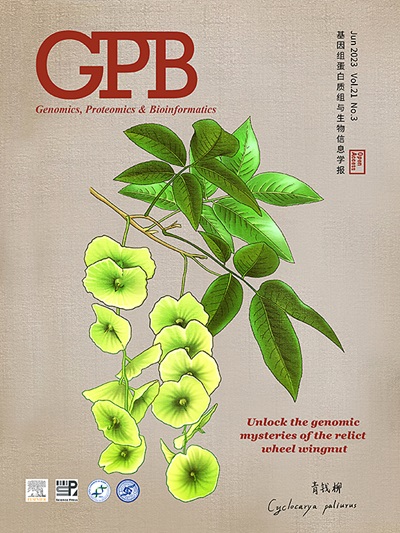Sequence-based Functional Metagenomics Reveals Novel Natural Diversity of Functional CopA in Environmental Microbiomes
IF 7.9
2区 生物学
Q1 GENETICS & HEREDITY
引用次数: 0
Abstract
Exploring the natural diversity of functional genes/proteins from environmental DNA in high throughput remains challenging. In this study, we developed a sequence-based functional metagenomics procedure for mining the diversity of copper (Cu) resistance gene copA in global microbiomes, by combining the metagenomic assembly technology, local BLAST, evolutionary trace analysis (ETA), chemical synthesis, and conventional functional genomics. In total, 87 metagenomes were collected from a public database and subjected to copA detection, resulting in 93,899 hits. Manual curation of 1214 hits of high confidence led to the retrieval of 517 unique CopA candidates, which were further subjected to ETA. Eventually, 175 novel copA sequences of high quality were discovered. Phylogenetic analysis showed that almost all these putative CopA proteins were distantly related to known CopA proteins, with 55 sequences from totally unknown species. Ten novel and three known copA genes were chemically synthesized for further functional genomic tests using the Cu-sensitive Escherichia coli (ΔcopA). The growth test and Cu uptake determination showed that five novel clones had positive effects on host Cu resistance and uptake. One recombinant harboring copA-like 15 (copAL15) successfully restored Cu resistance of the host with a substantially enhanced Cu uptake. Two novel copA genes were fused with the gfp gene and expressed in E. coli for microscopic observation. Imaging results showed that they were successfully expressed and their proteins were localized to the membrane. The results here greatly expand the diversity of known CopA proteins, and the sequence-based procedure developed overcomes biases in length, screening methods, and abundance of conventional functional metagenomics.
基于序列的功能元基因组学揭示了环境微生物组中功能 CopA 的新的自然多样性。
从环境 DNA 中高通量探索功能基因/蛋白质的自然多样性仍然是一项挑战。在这项研究中,我们开发了一种基于序列的功能元基因组学程序,通过结合元基因组组装技术、局部 BLAST、进化痕量分析(ETA)、化学合成和传统功能基因组学,挖掘全球微生物组中铜(Cu)抗性基因 copA 的多样性。研究人员从公共数据库中收集了 87 个元基因组,并对其进行了 copA 检测,结果发现了 93,899 条命中信息。在对 1214 个高置信度的点击进行人工整理后,检索到 517 个独特的 CopA 候选者,并对其进行了进一步的 ETA 分析。最终,发现了 175 个高质量的新型 CopA 序列。系统进化分析表明,几乎所有这些假定的 CopA 蛋白都与已知的 CopA 蛋白关系密切,其中 55 个序列来自完全未知的物种。我们用化学方法合成了 10 个新的和 3 个已知的 CopA 基因,并利用对铜敏感的大肠杆菌(ΔcopA)进行了进一步的功能基因组测试。生长试验和铜吸收测定结果表明,五个新克隆对宿主的铜抗性和铜吸收有积极影响。其中一个携带 copA-like 15(copAL15)的重组体成功地恢复了宿主对铜的抗性,并大大提高了铜的吸收率。两个新型 copA 基因与 gfp 基因融合,并在大肠杆菌中表达,以进行显微观察。成像结果表明,这两个基因成功表达,其蛋白定位于膜。这些结果大大扩展了已知 CopA 蛋白的多样性,而且所开发的基于序列的程序克服了传统功能元组学在长度、筛选方法和丰度方面的偏差。
本文章由计算机程序翻译,如有差异,请以英文原文为准。
求助全文
约1分钟内获得全文
求助全文
来源期刊

Genomics, Proteomics & Bioinformatics
Biochemistry, Genetics and Molecular Biology-Biochemistry
CiteScore
14.30
自引率
4.20%
发文量
844
审稿时长
61 days
期刊介绍:
Genomics, Proteomics and Bioinformatics (GPB) is the official journal of the Beijing Institute of Genomics, Chinese Academy of Sciences / China National Center for Bioinformation and Genetics Society of China. It aims to disseminate new developments in the field of omics and bioinformatics, publish high-quality discoveries quickly, and promote open access and online publication. GPB welcomes submissions in all areas of life science, biology, and biomedicine, with a focus on large data acquisition, analysis, and curation. Manuscripts covering omics and related bioinformatics topics are particularly encouraged. GPB is indexed/abstracted by PubMed/MEDLINE, PubMed Central, Scopus, BIOSIS Previews, Chemical Abstracts, CSCD, among others.
 求助内容:
求助内容: 应助结果提醒方式:
应助结果提醒方式:


